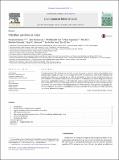Ultrafine particles in cities
Author(s)
Kumar, Prashant; Morawska, Lidia; Birmili, Wolfram; Paasonen, Pauli; Hu, Min; Kulmala, Markku; Harrison, Roy M.; Norford, Leslie Keith; Britter, Rex E; ... Show more Show less
DownloadPublished version (867.8Kb)
Terms of use
Metadata
Show full item recordAbstract
Ultrafine particles (UFPs; diameter less than 100. nm) are ubiquitous in urban air, and an acknowledged risk to human health. Globally, the major source for urban outdoor UFP concentrations is motor traffic. Ongoing trends towards urbanisation and expansion of road traffic are anticipated to further increase population exposure to UFPs. Numerous experimental studies have characterised UFPs in individual cities, but an integrated evaluation of emissions and population exposure is still lacking. Our analysis suggests that the average exposure to outdoor UFPs in Asian cities is about four-times larger than that in European cities but impacts on human health are largely unknown. This article reviews some fundamental drivers of UFP emissions and dispersion, and highlights unresolved challenges, as well as recommendations to ensure sustainable urban development whilst minimising any possible adverse health impacts. Keywords: city environment; particle exposure; health impacts; particle number concentration; ultrafine particles
Date issued
2014-02-04Department
Massachusetts Institute of Technology. Department of Architecture; Massachusetts Institute of Technology. Department of Urban Studies and PlanningJournal
Environment International
Publisher
Elsevier
Citation
Kumar, Prashant et al. "Ultrafine particles in cities." Environment International 66 (2014): 1-10 © 2014 Publisher
Version: Final published version
ISSN
0160-4120